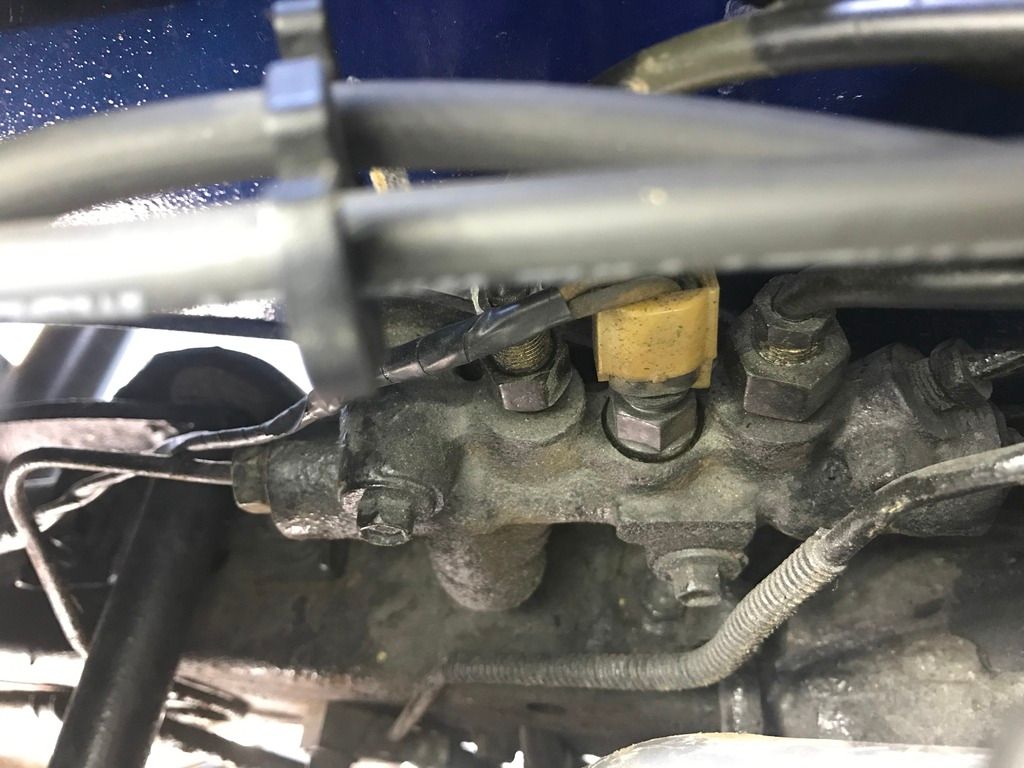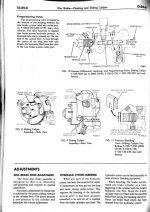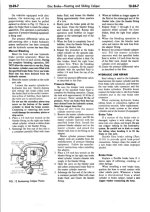If your existing prop valve is not the culprit in blocking flow to the fronts, then changing it out to reduce pressure to the rear, will do only just that. Reduce the rear brake force. It will do nothing for increasing the pressure to the front. That's not it's job.
Doing so will certainly allow you to adjust out the rear lockup, but if doing this against an already under-performing front, all you're doing is going through a lot of work to reduce your brakes power even more.
However, if your old one is somehow blocking flow, then yes, changing out is a good idea.
Not only for that though, but if your Bronco is modified with lifts, larger tires, different things here and there, then the original "balance" of the truck is no longer stock anyway, so it's possible that the original design valve is no longer accurate.
But as an aside, are you pulling the delay valve stem out while bleeding the fronts, as described in the manual? You see on the very front face of the valve is a small threaded-in fitting with a small stem sticking out? That's a "delay valve" to restrict the fronts until the rears can catch up. It's supposed to be deactivated during bleeding so that it's not causing any trouble during the process. It's possible that this valve is stuck and not allowing full pressure to the fronts.
You should be able to test this by pulling out on it with some pliers and holding it out somehow. There is a tool described in the books (little spring clip thingy) but I've had moderate success with needle-nosed locking pliers/Vise-Grips too. Use one pair of standard needle nose pliers to pull out on the valve, then the Vise-Grips clamp on the stem to hold it in it's open position.
After you do this, go for a drive and see if there is any change.
If so, then you have your culprit. If not, then I suppose it's still possible that corrosion or debris has built up inside and it could still be the valve causing your trouble. Don't know how to test that though.
Either way, if you decide to go with a new one, I also recommend an adjustable in the rear only. It's just more adaptable to the different Bronco setups with different tires and weights and all that. It's not simpler to install in an existing system of course, because it does mean some re-orienting of tubes and most likely going to involve some custom bending and such. But it's the way to go in my opinion.
If you decide simpler is better, I then the non-adjustable type would fit that bill. Here's both types and some fittings that we sell:
http://www.wildhorses4x4.com/category/s?keyword=proportioning+valve
I don't believe the stock original style is available anywhere (that I've seen anyway) but it's possible that the Mustang guys are reproducing something more accurate than a block of brass like the aftermarket has.
But even if you find a factory style, don't assume it's got the same thread size as yours. I'm pretty sure that Ford had at least four different versions for different cars and trucks, and they do not just bolt up to the same bolt holes or have the same thread size for the tubes. So unless you find an exact prepop of your EB model, the one pictured is the best route.
I just hate how they often leak out of the front plug. No rhyme or reason, other than some don't, some do.
I think something worth mentioning too, is that stock Bronco brakes were good, but not fantastic. And anytime an aftermarket booster is added, you run the risk of having even weaker brakes. They're just not as powerful as the original Ford version that I've experienced. Not that I've driven a ton of factory original versions back when they were new, but I've driven plenty of newer aftermarket power brake equipped Broncos, and whether with your Ford calipers, or the more common GM caliper setups, they're just average brakes. Good, but only a little better than manual brakes.
Good luck tracking this down. But I'd start with checking that delay valve's function before re-designing the whole system. Maybe even pull it out and inspect the seals and look for gunk inside the main prop valve body while you're in there.
Paul














